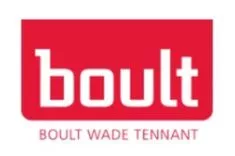A recent EPO decision has challenged the conventional exclusion on double patenting. Neil Thomson asks where the decision leaves EPO practice, and what impact it will have on proceedings in the UK.
"It is an accepted principle in most patent systems that two patents shall not be granted to the same applicant for one invention" (Guidelines for Examination at the EPO, C-IV, 6.4)".
Or is it? A recent Technical Board of Appeal of the European Patent Office (EPO) has considered whether there is any legal basis for the above practice and, for a specific set of facts, concluded that there is not.
Technical Board of Appeal Decision T587/98
In the case appealed, the applicant Komag Inc filed a European application EP 91115600.8, claim 1 of which related to, inter alia, a structure comprising three layers in addition to a substrate: namely, a first dielectric layer formed on said substrate, a magneto-optic (recording) layer formed on said dielectric layer and a second dielectric layer formed on said magneto-optic layer.
Subsequently, a divisional application EP 95100700.4, was filed, the main claim of which claimed at least two layers in addition to the substrate: namely a recording layer which may be an optical or a magneto-optical layer, and a dielectric layer which may be formed either on the recording layer or between it and the substrate.
Denoting the combination of substrate, first dielectric layer and recording layer as 'A' and the second dielectric layer as 'B', the parent effectively claimed 'A' with 'B', while the divisional claimed just 'A'(implicitly with or without 'B').
At first instance the Examining Division of the EPO refused the divisional application since, in their view, the claims conflicted with those of the parent application. The decision was based on the Guidelines for Examination which state:
C-IV, 6.4 "The Convention does not deal explicitly with the case of co-pending European applications of the same effective date. However, it is an accepted principle in most patent systems that two patents shall not be granted to the same applicant for one invention. It is permissible to allow an applicant to proceed with two applications having the same description where the claims are distinct in scope and directed to different inventions. However, in the rare case in which there are two or more European applications from the same applicant ... and the claims of those applications have the same priority date and relate to the same invention ... the applicant should be told that he must either amend one or more of the applications in a manner that they no longer claim the same invention, or choose which one of those applications he wishes to proceed to grant."
C-VI,9.6 "The parent and divisional applications may not claim the same subject-matter (See IV, 6.4). This means not only that they must not contain claims of substantially identical scope, but also that one application must not claim the subject-mater claimed in the other, even in different words. The difference between the claimed subject-matter of the two applications must be clearly distinguishable. As a general rule, however, one application may claim its own subject-matter in combination with that of the other application. In other words, if the parent and divisional applications claim separate and distinct elements 'A' and 'B' respectively which function in combination, one of the two applications may also include a claim for 'A' plus 'B' ".
The applicant appealed the refusal. The applicant argued that a ban on "double patenting" had no basis in the European Patent Convention and that in any case the claims of the parent and divisional were not for "the same invention".
In T587/98 a Board of Appeal observed that Article 125 of the EPC allows the EPO to take account of the principles of procedural law generally recognized in the contracting states where there is an absence of procedural provisions in the European Patent Convention. However, the Board concluded (reversing the previous decision) that the "institution of a divisional patent" was a matter for substantive law rather than a matter of procedure. Thus, the Board concluded that the practice laid down by the EPC relating to divisional applications is "self-contained and complete".
In view of the above, the Board went on to conclude that in the specific case of parent and divisional applications there is no express or implicit provision in the EPC which prohibits the presence in a divisional application of "an independent claim which is related to an independent claim in the parent application in such a way that the 'parent' claim includes all the features of the 'divisional' claim combined with an additional feature". However, the Board was careful not to reach any conclusions with wider applicability to the case of "double-patenting". What are the implications of this decision? As acknowledged by the Board itself, it is possible that there will be a proliferation of divisional applications all with overlapping scopes. As a result, third parties may face 'double jeopardy' - simultaneously infringing multiple patents - all of which have originated from a single filing.
Impact of Decision T587/98 in the UK
What impact will the Decision have in the UK? Article 139(3) EPC states:
"Any contracting state may prescribe whether and on what terms an invention disclosed in both a European patent application or patent and a national application or patent having the same date of filing, or where priority is claimed, the same date of priority, may be protected simultaneously by both applications or patents".
The UK Patents Act 1977 has exercised this power through the wording of Section 73(2), as amended, to deal with conflicting European (UK) and national UK patents:
"If it appears to the Comptroller that a patent under this Act and a European patent (UK) have been granted for the same invention having the same priority date and that the applications for the patents were filed by the same applicant or his successor in title...the Comptroller shall revoke the patent [under this Act]".
The clear intention of Section 73(2) was explained by the Court of Appeal in Marley's Patent ([1994]) RPC 231) where it was held that the correct construction of subsection (2) is the literal one. Balcombe LJ held:
It seems to me that the obvious purpose of [Section 73(2)] is to enable the Comptroller to prevent there being in existence two patents for the same invention, having the same priority date and where the applications for both patents were filed by the same applicant, and this is irrespective of the fact that other linked inventions may be included in the claims of either patent. The existence in these circumstances of concurrent patents for the same invention would not only be administratively undesirable, but could result in a defendant who has successfully defeated a claim for infringement of one patent being threatened with proceedings for infringement of the other in relation to the same activities. If the construction adopted by the judge - that the purpose of Section 73(2) is to prevent the similarity, but not the overlapping, of monopolies - were correct it would always be possible to circumvent operation of the sub-section by including in the claims of one patent two linked inventions (I1 and I2), but to include in the claim of the other patent only one of the inventions (I1).
Further, Section 18(5) of the Patents Act 1977 prevents two national UK patents being granted for the same invention having the same priority date and applicant.
It is clear that the EPO Board's definition of "the same invention" and "conflicting claims" as contained in the Guidelines for Examination is significantly different to the UK Courts' interpretation of the same terms as applied to the Patents Act 1977.
The UK Patents Act contains clear rules regarding conflict between two national UK applications and between UK national and European (UK) patents. But what happens in the case where both patents are European (UK) patents? Section 18(5) is limited to applications under the 1977 Act, and in any case refers only to pre-grant applications. Section 73(2) refers only to conflict between European (UK) and national UK patents. In addition, the Comptroller's powers are limited to revocation of the national patent; no action can be taken against a European (UK) patent. As such, it would appear that the Comptroller has no power to revoke one of two European (UK) patents resulting from two European patents granted further to two applications prosecuted through the European Patent Office.
Conclusion
The Decision T587/98 has called into question whether the double patenting exclusion of most patent systems is an exclusion that can be found in the European Patent Convention. For a particular set of facts one EPO Board of Appeal ruled that two patents with overlapping claims could be granted in a parent application and an application divided therefrom.
The United Kingdom patent law appears to have no provisions preventing the enforcement of two European (UK) patents with overlapping claims resulting from a single parent application. Thus the situation considered undesirable by Balcombe, LJ in Marley's Patent could apply in the United Kingdom after all and a defendant may face the double jeopardy of infringing two patents granted with overlapping claims for a single invention.
© 2001. Boult Wade Tennant
This article was first published in the April 2001 issue of Managing Intellectual Property.
The content of this article does not constitute legal advice and should not be relied on in that way. Specific advice should be sought about your specific circumstances.

